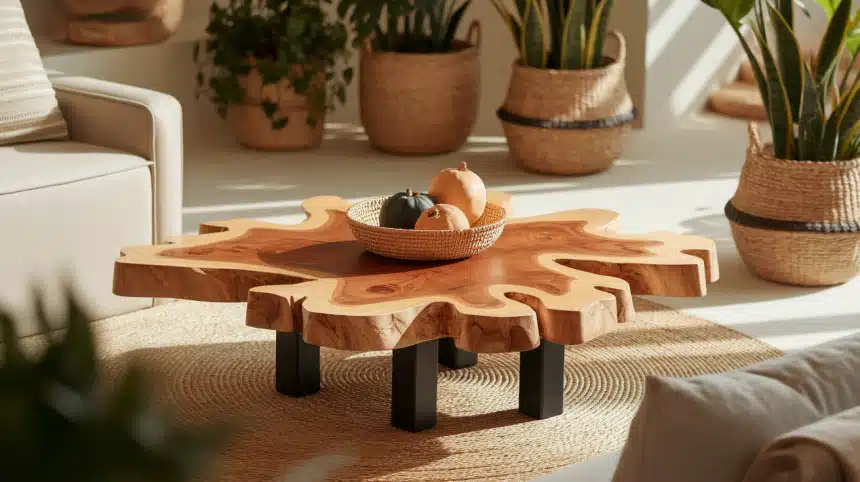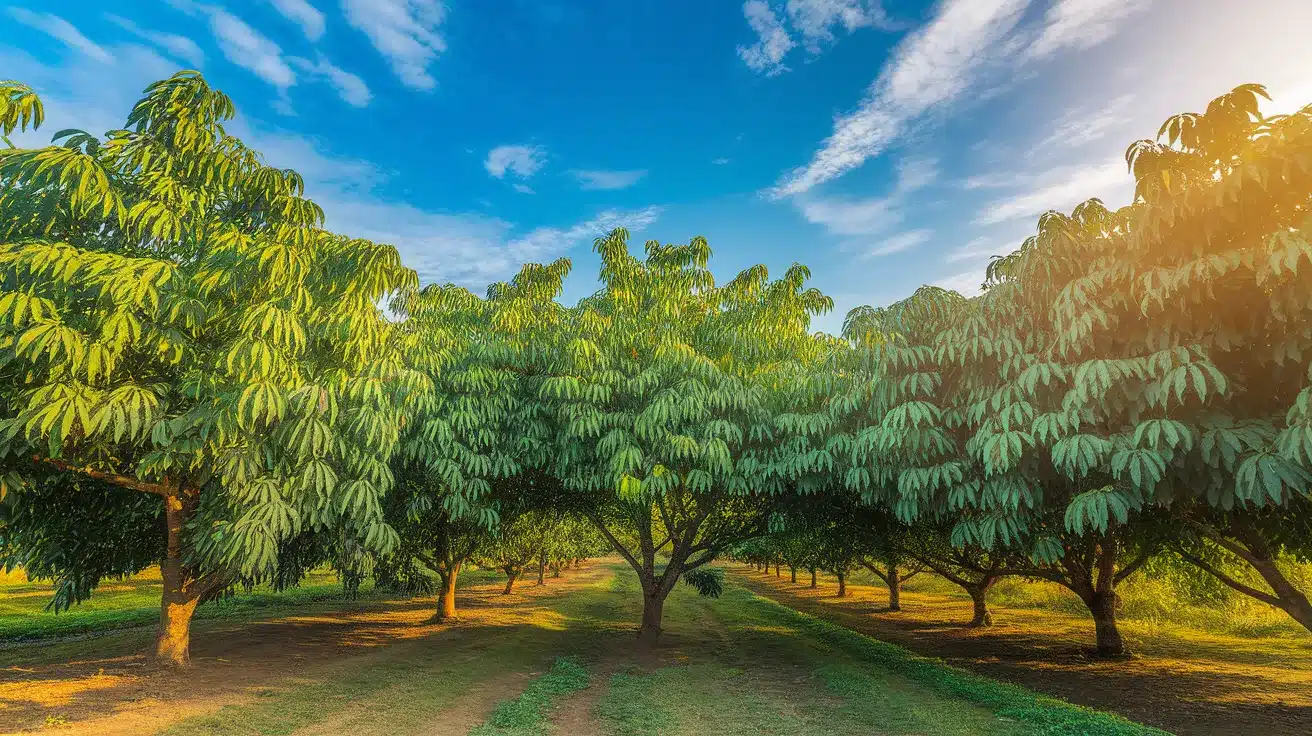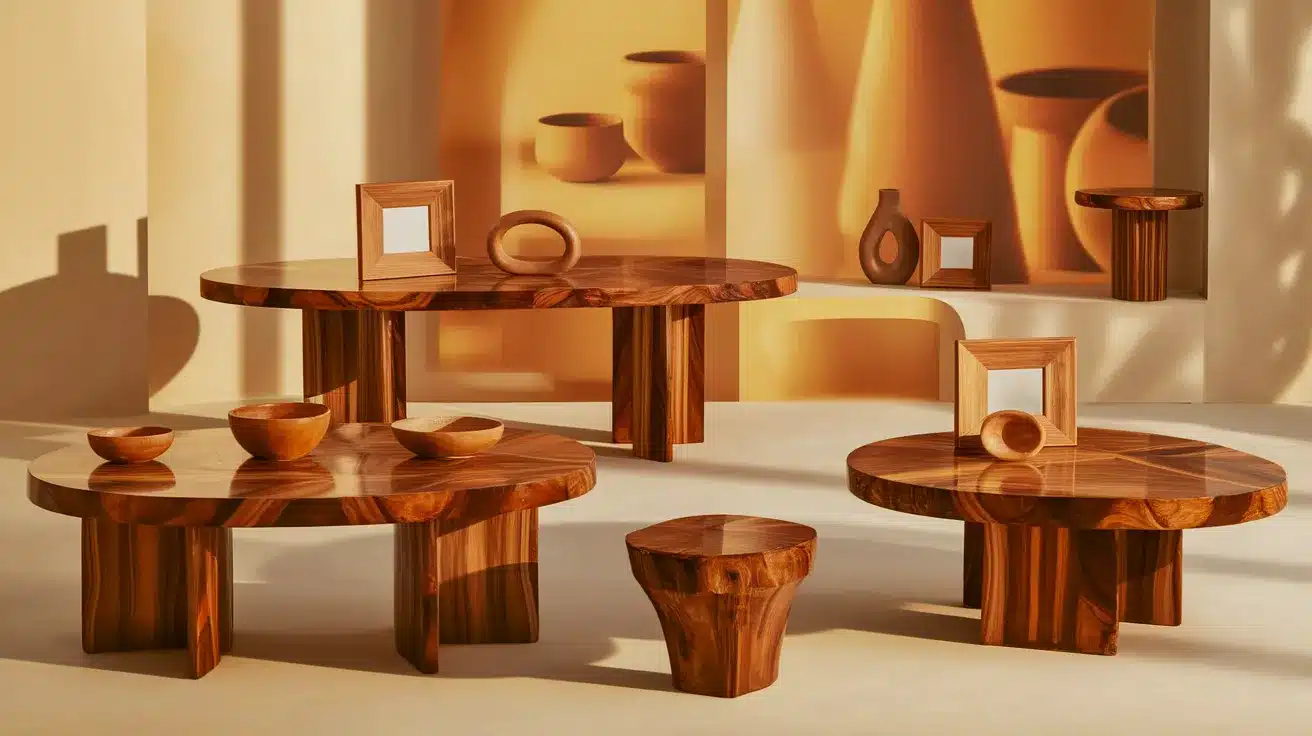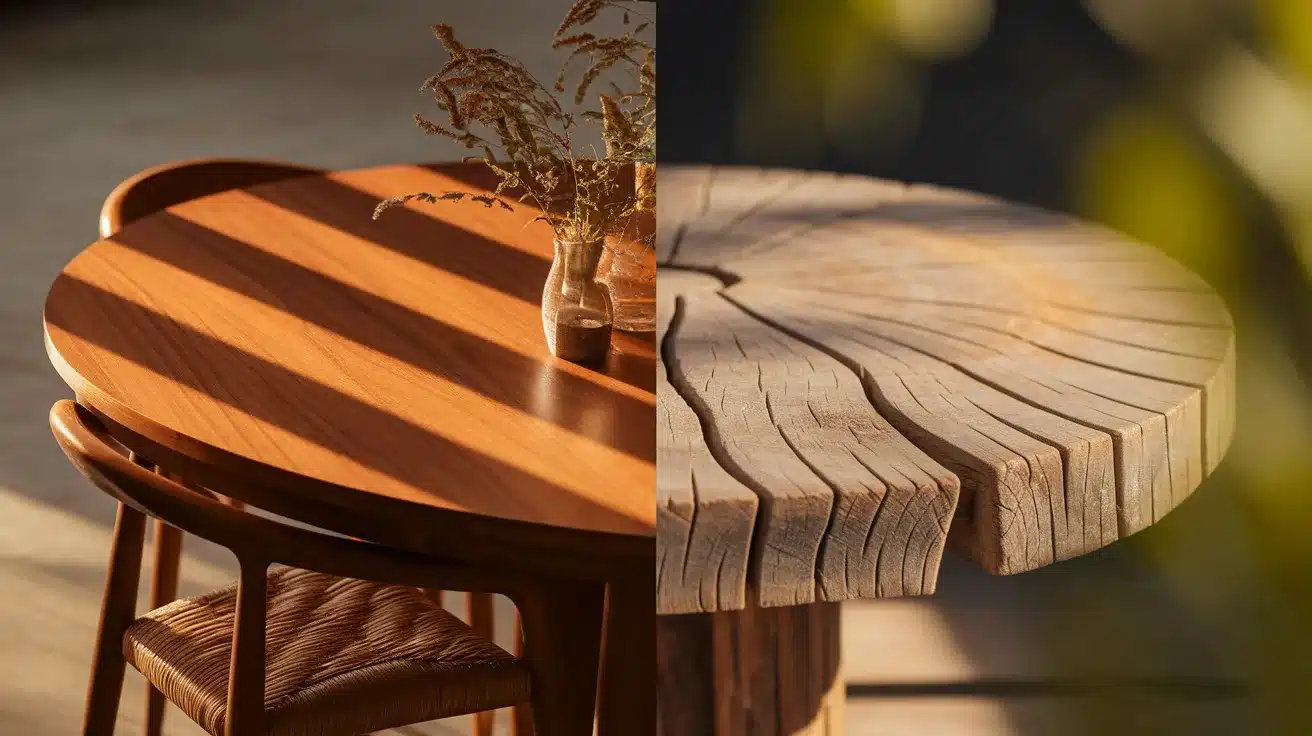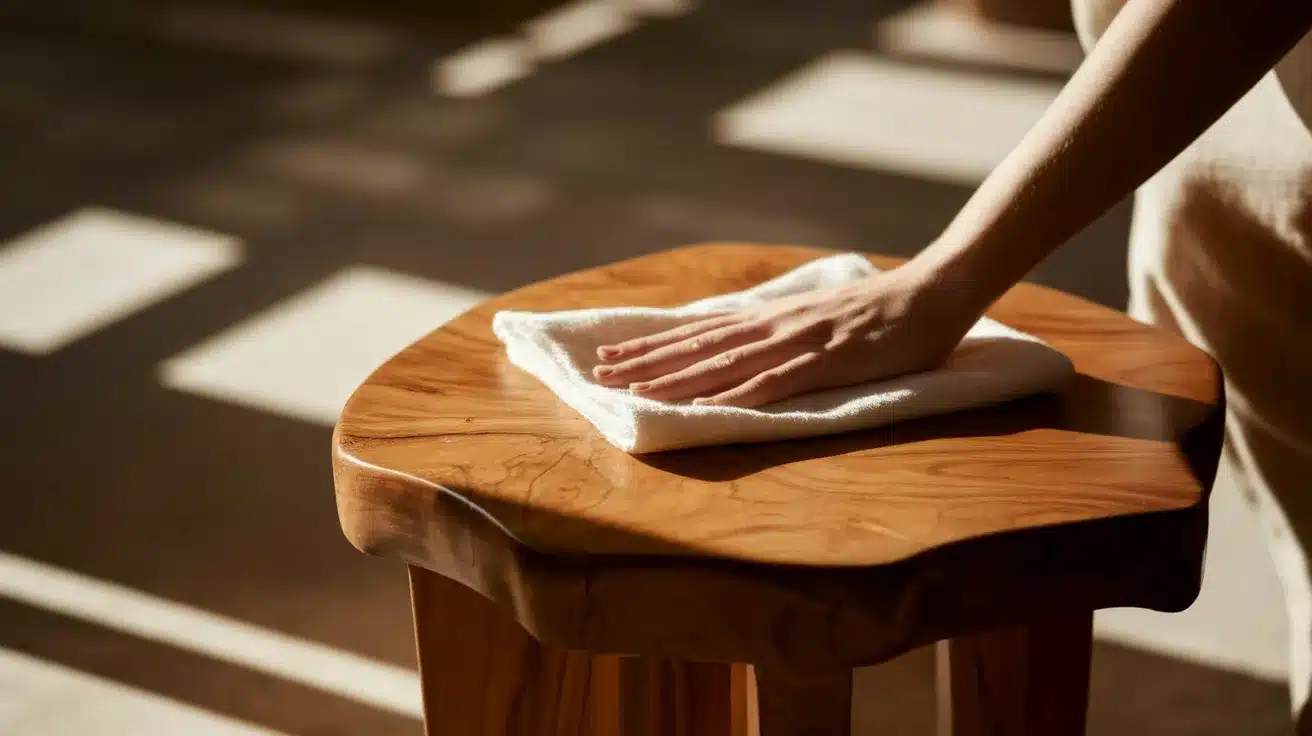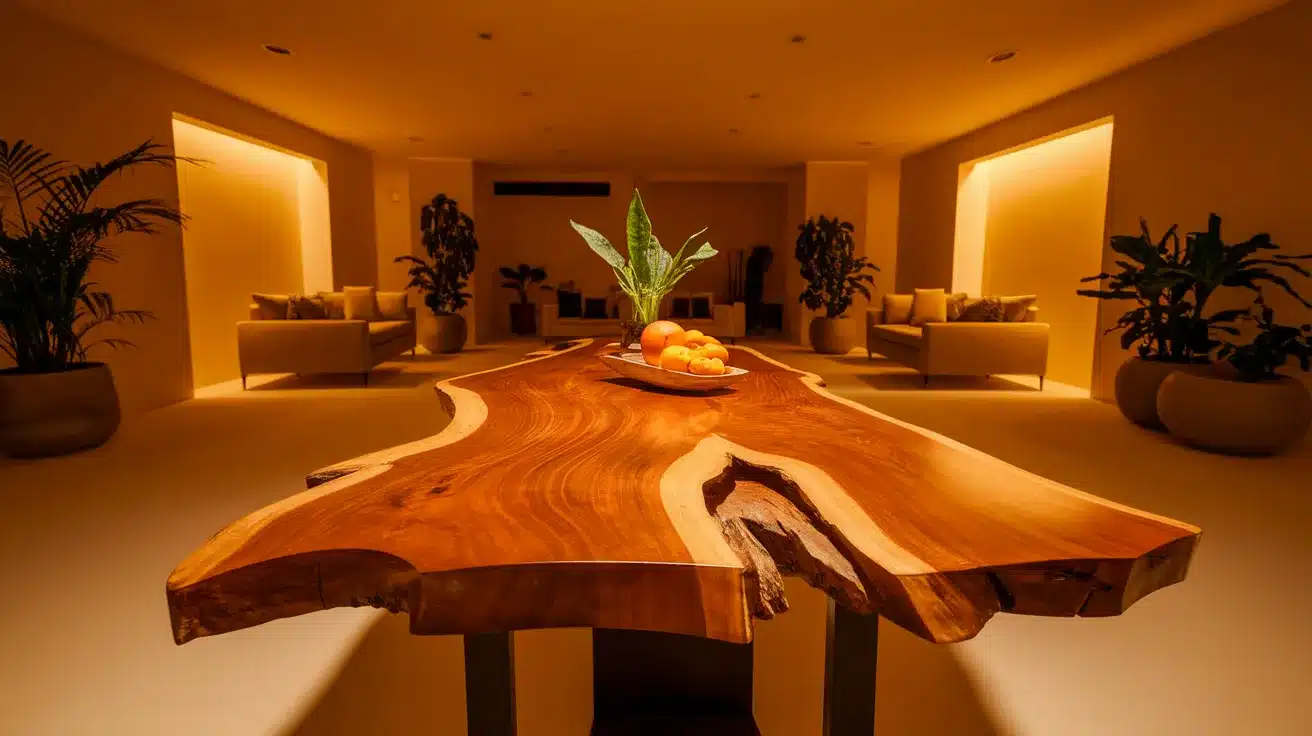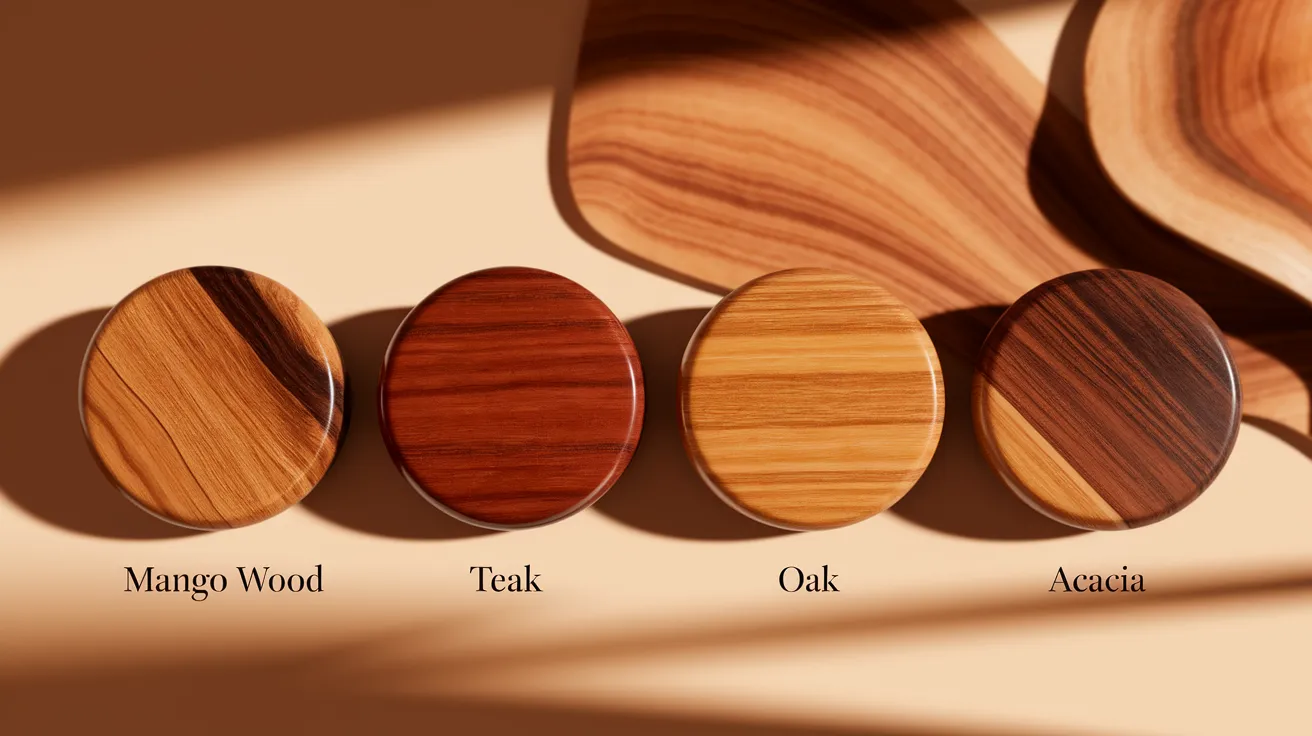I’ve always been charmed by the warm honey glow and unique grain patterns of mango wood furniture. Beyond its striking appearance, I found that mango wood is actually a sustainability champion with a fascinating story.
As someone passionate about eco-friendly home décor, I’m excited to share why this remarkable material deserves your attention.
From its origins as fruit-bearing trees to its second life as beautiful furniture, mango wood offers a perfect blend of environmental responsibility and distinctive style.
In this guide, you will explore everything you need to know about this versatile wood, from its characteristics and benefits to practical care tips and design possibilities.
If you’re inspired by the sustainability and character of mango wood, you’ll love these 42 Easy & Affordable DIY Home Decor Projects that bring creativity and eco-conscious style to any living space
What Makes Mango Wood Special?
Unlike traditional hardwoods harvested purely for timber, mango wood comes with a delicious backstory. These trees spend 15-20 years producing the sweet tropical fruits we love before being repurposed for furniture when their fruit-bearing days are over. Talk about a second act!
Fun fact: A single mango tree can live for over 300 years in the wild, but commercial orchards typically replace trees after about two decades when fruit production declines.
Originating from theMangifera indica species native to South Asia, mango trees now thrive in tropical regions worldwide, with India, Thailand, Indonesia, Brazil, and Australia leading production. This global cultivation means mango wood carries diverse cultural influences in its craftsmanship.
The Unmistakable Look of Mango Wood
What sets mango wood apart visually is its personality—no two pieces are ever quite the same. The wood showcases:
- Golden honey tones that sometimes feature surprising streaks of pink, green, or black
- Distinctive grain patterns ranging from tight, straight lines to dramatic, swirling configurations
- A natural luster that deepens beautifully with age
This natural variation means your mango wood coffee table or bookshelf isn’t just furniture—it’s a one-of-a-kind piece with its own unique character.
How Sustainable Is Mango Wood Really?
In today’s eco-conscious world, mango wood stands out as a genuinely green choice. Here’s why environmentally-minded shoppers are falling in love with this material:
The Renewable Cycle
When mango trees stop producing fruit commercially, they’re typically removed to make way for new, productive trees. By harvesting this wood for furniture, we’re:
- Utilizing trees that would otherwise be discarded
- Reducing pressure on slow-growing forest hardwoods
- Supporting a renewable cycle where new trees are constantly being planted
- Creating additional income for farmers
Smaller Carbon Footprint
Compared to many exotic hardwoods that might travel thousands of miles from threatened rainforests, mango wood often has a shorter pilgrimage to market.
Plus, these trees sequester carbon throughout their fruit-producing years, making their environmental impact significantly lighter than wood harvested solely for timber.
How Does Mango Wood Perform in Daily Life?
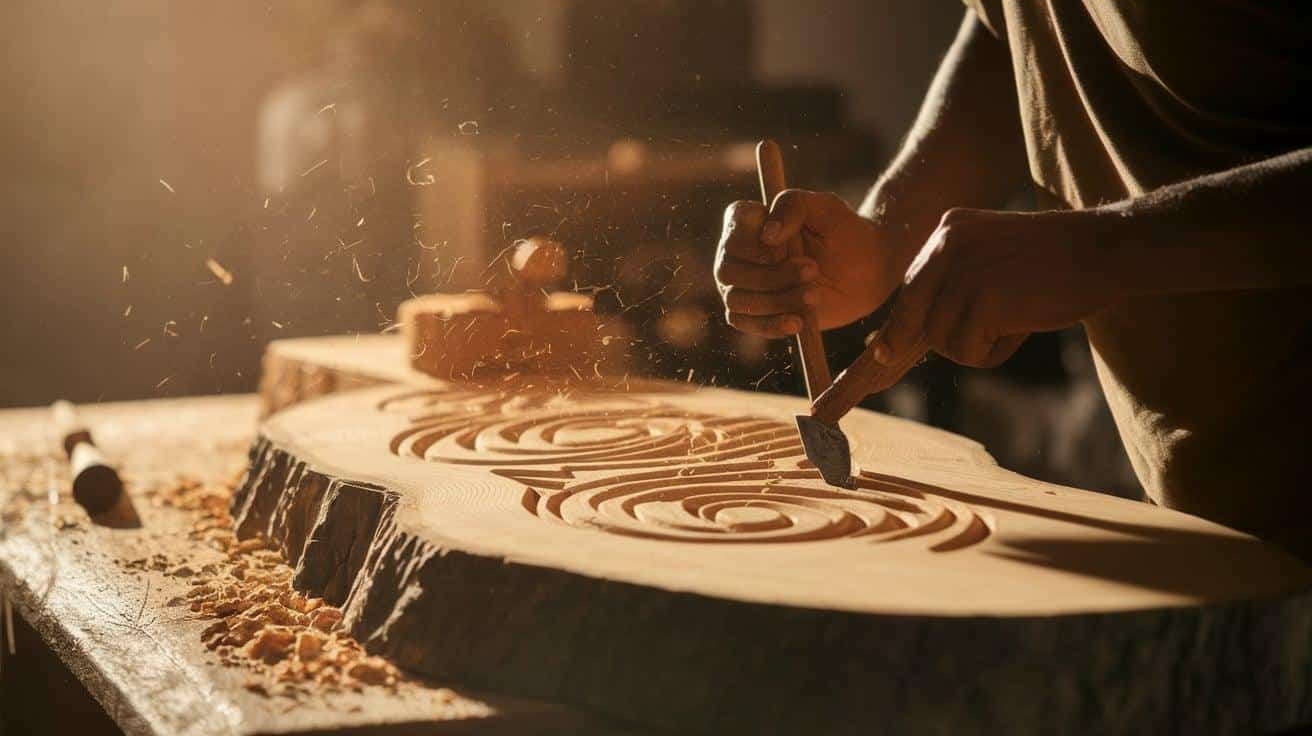
Understanding mango wood’s practical qualities helps determine if it’s right for your home:
Durability Score: 7/10
With a Janka hardness rating of approximately 1,070 lbf, mango wood sits comfortably in the medium-hard category—tougher than pine but not quite as rock-solid as oak or teak. This makes it:
- Strong enough for everyday furniture like dining tables and chairs
- Resistant to dents and scratches from normal use
- Capable of lasting for decades with proper care
Workability: Why Craftspeople Love It
For furniture makers and artisans, mango wood offers the perfect balance of beauty and functionality:
- Takes well to both hand and machine tools
- Accepts stains and finishes beautifully
- Holds detailed carvings without excessive splintering
- Showcases natural character that improves designs
Bringing Mango Wood Into Your Home: Popular Uses
The versatility of mango wood makes it suitable for virtually any room in your house. Here’s where you’ll commonly find it:
Statement Furniture Pieces
The distinctive look of mango wood makes it perfect for standout items:
- Dining tables with live edges that showcase natural grain patterns
- Entertainment centers that combine rustic charm with modern functionality
- Bedroom sets that bring warmth and character to your personal space
Everyday Accents and Home Décor
Not ready for large furniture? Mango wood excels in smaller pieces too:
- Serving boards and bowls (treated with food-safe finishes)
- Picture frames that highlight the wood’s natural variations
- Decorative boxes and storage solutions that blend beauty with practicality
Artisanal Touches
The wood’s excellent carving properties make it a favorite for artisans creating:
- Intricate wall art with hand-carved details
- Unique sculptural pieces that serve as conversation starters
- Handcrafted home accessories with cultural influences
The Pros and Cons: Honest Talk About Mango Wood
Every material has its strengths and challenges. Here’s what you should know before investing in mango wood:
The Good Stuff
- Eco-friendly choice that repurposes agricultural by-products
- Unique character with one-of-a-kind grain patterns
- Budget-friendly compared to teak, walnut, or cherry
- Moderate durability that holds up well to everyday use
- Takes finishes beautifully for various aesthetic styles
The Challenges
- Requires regular maintenance with occasional oiling to prevent drying
- Sensitive to extreme environments – not ideal for outdoor use unless specially treated
- Can be susceptible to pests if not properly finished and maintained
- May show movement with significant humidity changes
Living With Mango Wood: Care Tips for Lasting Beauty
With just a bit of attention, your mango wood pieces will continue to shine for years:
Quick Daily Care
- Dust regularly with a soft cloth
- Clean spills promptly to prevent staining
- Use coasters and placemats to protect surfaces
Seasonal Maintenance
Every few months, show your mango wood some extra love:
- Apply food-grade mineral oil or specialized wood oil to prevent drying
- Use furniture wax occasionally for added protection and sheen
- Check for any signs of drying or cracking and address them early
Environmental Protection
- Position pieces away from direct sunlight to prevent uneven fading
- Maintain moderate humidity levels in your home
- Avoid placing near heaters, air conditioners, or radiators
Shopping Smart: Finding Quality Mango Wood
Not all mango wood pieces are created equal. Here’s how to spot the good stuff:
Quality Indicators
Look for these signs of well-crafted mango wood:
- Smooth, properly sanded surfaces with no rough patches
- Evenly applied finish with good depth and luster
- Solid construction with proper joinery in furniture pieces
- Wood that feels substantial and heavy for its size
Sustainability Credentials
For the most eco-conscious purchase:
- Ask about certifications like FSC (Forest Stewardship Council)
- Look for fair trade practices that support artisan communities
- Consider companies that participate in tree-planting programs
Price Expectations
Quality mango wood typically falls into these ranges:
- Small decorative items: $20-100
- Dining chairs: $150-300 each
- Coffee tables: $300-800
- Dining tables: $800-2,000
Mango Wood vs. The Competition: How Does It Compare?
Wondering how mango wood stacks up against other popular woods? Here’s a quick comparison:
Mango vs. Teak
- Sustainability: Mango wins for being a repurposed by-product
- Durability: Teak edges ahead, especially for outdoor use
- Price: Mango is significantly more affordable
- Look: Mango offers more varied character; teak provides classic elegance
Mango vs. Oak
- Hardness: Oak is generally harder and more dent-resistant
- Visual interest: Mango provides more unique grain patterns
- Tradition: Oak offers timeless appeal; mango brings exotic character
- Price: Mango typically costs less than quality oak
Mango vs. Acacia
- Similarity: Both are sustainable alternatives to traditional hardwoods
- Durability: Acacia holds up slightly better to moisture
- Appearance: Both offer interesting grain, with mango showing more color variation
- Price: They’re comparable, with specific pieces varying based on design
Making Mango Wood Work in Different Styles
One of mango wood’s greatest strengths is its versatility across design aesthetics:
Rustic and Farmhouse
The natural variations and warm tones complement rustic décor perfectly, especially with:
- Live-edge tables
- Distressed finishes
- Chunky, substantial pieces
Modern and Contemporary
With the right treatment, mango wood adapts beautifully to modern spaces:
- Clean lines and minimalist designs
- Dark stains for dramatic contrast
- Mixed-material approaches combining wood with metal or glass
Global and Bohemian
The wood’s exotic origins make it perfect for:
- Hand-carved details with cultural influences
- Rich, warm finishes that highlight natural patterns
- Eclectic pairings with textiles and global accessories
Final Thoughts
Mango wood stands as a remarkable material that balances visual appeal with environmental responsibility. Its voyage from orchard to living room represents thoughtful resource usage at its finest.
The distinctive grain patterns and warm tones bring character to any space, while its medium hardness provides practical durability for everyday use.
Though it requires some maintenance and care, the effort pays off in furniture that ages beautifully and tells a story. For those seeking alternatives to traditional hardwoods, mango wood offers comparable quality at a friendlier price point without compromising on style or sustainability.
As home décor continues to evolve, this versatile wood remains adaptable to changing trends while maintaining its timeless appeal and environmental benefits.

